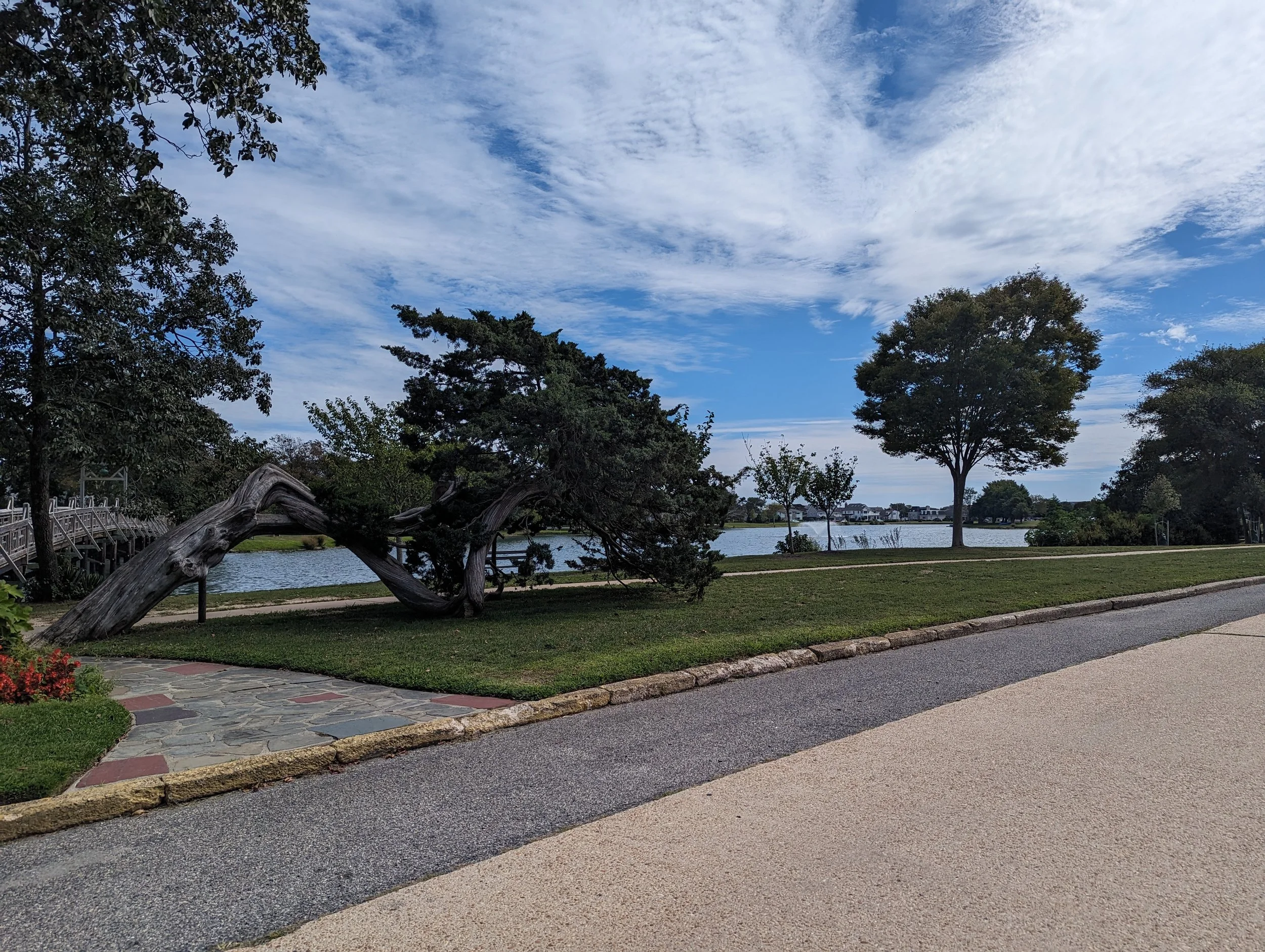On the western shore of Spring Lake, right near the Mercer Avenue foorbridge lives The Bent Cedar. Like an old man leaning on his elbow watching the lake, the tree is a survivor. For some it is a cherished memory of Spring Lake, others pass it by as if it were not there.
A massive eastern red cedar; it appears old. But how old? How did it bend that way?
The sign reads “I am an old and well-loved tree. Please don’t sit or stand on me.”
How old is the tee? To measure age, a core sample or cutting it down to count the rings is really the only true indication. That is not about to happen, but an alternative would be to measure the girth in cm about 1 meter from the ground and divide by 2.5. That probably is inaccurate for our tree because of the bend. But a rough measure might make it somewhere between 80-150 years old. Many live over 300 years, and the oldest recorded eastern red cedar tree is in West Virginia at 960 years old.
The guess makes some sense, as the area around Divine Park was only protected with the formation of the park for the Spring Lake Land Improvement Company around 1875. Much of the land surrounding Spring Lake and Sea Girt was populated with cedar.
Both towns have celebrated the cedar. Sea Girt’s logo includes “From the Cedars to the Sea” and Spring Lake is “Ocean, Wood, Lake”. If it were not protected by the park, the cedar would have been put to good use long ago like much of the local cedar which covered roofs, sided homes or made hope chests and closets. The wood is particularly well suited to the ocean environment and is rot and insect-resistant.
How did it bend? Cedars grow up like most trees, but the narrow root ball leaves them susceptible to being knocked over by wind and ice. Unlike other trees, tipping them over often does not kill them. Evolved to bend away from the wind, they grow crooked and sometimes fall, bend, and then twist vertically, which often results in odd shapes. The February blizzard of 1902 might have been a reasonable estimate for a storm given the suspected age of the tree. It started with heavy snow, then a gale, followed by a sleet storm. Flooding rain over a second night froze. Eventually, a thick coat of ice covered the trees. Trees, limbs and wires were down all over Monmouth County.
Wind bends cedars into odd shapes. This one was in Sea Girt at the ocean in 1884 Marriott C Morris Collection Library company of Philadelphia
The Japanese art of Bonzai intentionally bends trees, and cedars, members of the juniper family are one of the most popular because of their resilience to bending. In the 15th century, foresters in Japan near Kyoto trained multiple cedar trunks to grow son ingle plants in a practice called Daisugi to grow farms of lumber without the need to cut down the mother tree.
Is this the tree? Pictured below, in almost the right location is a bent cedar. Marrott Morris Junior is leaning his bike against a bent young cedar in 1907. The New Monmouth Hotel (1904) is in the distance which would equate to the homes at Monmouth Shire today, and the Presbyterian Chuch was on First between Essex and Sussex. The surviving cedar would have needed more trauma than is pictured here, but it does seem to have the same perilous bend and in the right direction. Visit the Bent Cedar. Get to know all your local trees. If you have any other information about this old neighbor, let me know.
Image courtesy of the Library Company of Philadelphia Morris Collection




